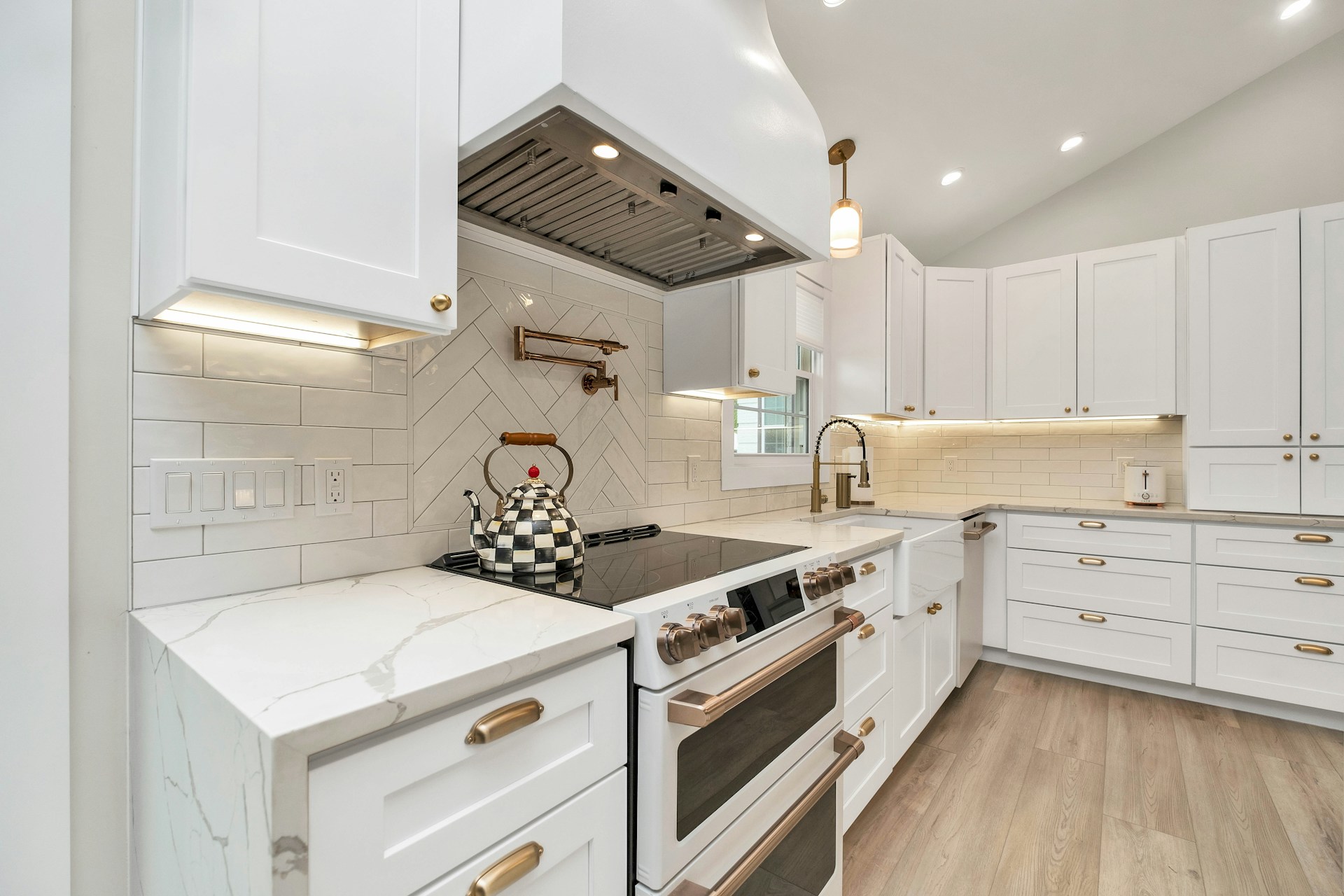In the ever-evolving world of home design, sustainability has emerged as a key factor that homeowners consider when updating or remodeling their kitchens. More than a fleeting trend, environmentally-friendly kitchen solutions are now a staple feature of modern living spaces. By incorporating eco-friendly materials and advanced technology into their kitchens, homeowners can minimize their environmental footprint while still enjoying the aesthetics and functionality that come with a well-designed kitchen. One area where these advancements are particularly visible is the design and construction of kitchen cabinets. From the selection of materials to the incorporation of smart technology, this article explores the latest advancements in sustainable kitchen cabinetry.
Sustainable materials for kitchen cabinets
As the demand for sustainable solutions grows, the choice of materials for kitchen cabinets has diversified beyond the traditional wood. Developers and homeowners alike are now turning to eco-friendly materials that have less of an impact on the environment.
Also read : Which type of ice machine is most suitable for a home bar?
One such material is bamboo, which is not only renewable but also incredibly durable, making it a perfect alternative to traditional hardwood. Bamboo grows much faster than conventional trees, meaning it can be harvested more frequently without causing significant harm to forests. Other eco-friendly options include reclaimed or recycled wood, which reduces the need for new wood and helps to reduce deforestation.
Another sustainable material is Plyboo, a type of plywood that is made from bamboo. Plyboo is both durable and attractive, making it a great choice for homeowners who want the look of wood without the environmental impact.
Also read : How can you reduce noise in a UK kitchen with open shelving?
The use of these sustainable materials in kitchen cabinetry is not only beneficial for the environment but also offers homeowners a unique and stylish design element for their kitchens. These materials often have unique textures and patterns, which can add character and individuality to a kitchen.
Smart technology in kitchen cabinets
Incorporating smart technology into the design of your kitchen cabinets can significantly enhance their functionality and contribute to a more sustainable kitchen.
One of the most popular advancements in this field is the use of energy-efficient LED lighting. These lights can be installed inside your cabinets to provide better visibility and create a warm, inviting ambiance in your kitchen. In addition to being energy-efficient, these lights are also long-lasting, thus reducing the need for frequent replacements.
Another piece of smart technology that is becoming increasingly popular in modern kitchens is the use of sensors and automatic systems. For instance, some cabinet designs now feature automatic opening systems, which can be particularly useful for those with mobility issues.
Trends in kitchen cabinet design
The current trends in kitchen cabinet design also align with the overarching theme of sustainability. Homeowners are opting for designs that offer maximum storage space without compromising on style or sustainability.
One of the current trends is the use of open shelving. This design not only gives a kitchen a modern and spacious feel, but it also reduces the amount of material needed for cabinet doors. Moreover, open shelves encourage homeowners to keep only what they need, thus promoting a minimalist and sustainable lifestyle.
Another trend in kitchen cabinet design is the use of modular units. These units can be easily moved and rearranged, allowing for a more flexible and adaptable kitchen space. This design not only enhances the functionality of the kitchen but also contributes to its sustainability, as it reduces the need for complete kitchen remodels.
The future of kitchen cabinetry
The future of kitchen cabinetry will continue to be shaped by the increasing demand for sustainable and smart solutions. As the technology continues to advance, we can expect to see more innovative designs and materials that promote sustainability and efficiency.
One potential innovation is the use of self-cleaning materials, which would reduce the need for harsh cleaning chemicals and contribute to a healthier kitchen environment.
Another exciting development could be the incorporation of solar power into kitchen cabinet designs. This could involve the use of solar-powered lights or even small appliances that can be powered directly from the cabinets.
While these advancements may still be in their early stages, they give a glimpse into the future of kitchen cabinetry – a future where sustainability and smart design go hand in hand.
Innovative Kitchen Cabinet Storage Solutions
In line with the push for sustainability, modern kitchen cabinet designs now emphasize smart storage solutions. The goal is to optimize the available kitchen space while minimizing waste, promoting efficient use of resources.
A standout trend in this regard is the incorporation of pull-out and corner drawer systems. These designs provide a practical solution for the often underutilized kitchen corners, allowing homeowners to maximize their storage space. This is particularly beneficial for those with a small kitchen, who need to make the most of every square inch.
Similarly, the use of multi-tiered drawers in kitchen cabinets has also gained traction. These allow for the efficient organization of kitchenware, making it easier for homeowners to locate their items and reducing the need for excessive kitchen equipment.
Furthermore, waste separation and recycling systems integrated into kitchen cabinets are becoming increasingly popular. These systems conveniently hide the bins from view while promoting a more eco-friendly lifestyle.
These innovative storage solutions not only enhance the functionality of kitchen cabinets but also contribute to a more efficient and sustainable kitchen.
Emerging Trends and Future Outlook for the Kitchen Cabinet Market
As we look toward the future of the kitchen cabinet market, it’s clear that sustainability and smart technology will remain at the forefront of design and innovation.
For instance, we’re beginning to see the development of kitchen cabinets made from bio-based materials. These materials, derived from renewable resources like corn and sugar cane, are not only environmentally friendly but also impressively durable and resistant to moisture and heat.
In terms of cabinet trends, we’re noticing a movement towards bespoke and personalized cabinets. This allows homeowners to tailor their kitchen design to their specific needs and preferences while reducing waste from excess materials.
Moreover, the use of smart technology is set to expand further. We can anticipate advancements in sensor-enabled cabinets that can monitor food storage conditions and even alert users when groceries are nearing their expiration date. This not only enhances the usability of kitchen cabinets but also significantly reduces food waste.
Given these emerging trends, it’s safe to predict that the future kitchen will not only be a hub of sustainability and efficiency but also a space that seamlessly combines style, functionality, and personalized comfort.
Conclusion
In conclusion, the world of kitchen cabinetry is experiencing an exciting transformation. Driven by the increasing demand for eco-friendly kitchen solutions, we are witnessing a shift towards the use of sustainable materials like bamboo and reclaimed wood. The integration of smart technology within kitchen cabinets is also on the rise, enhancing energy efficiency and usability.
Moreover, the focus on innovative storage solutions and personalized designs is setting a new standard in the modern kitchen landscape. As we look ahead, these trends point towards a future kitchen that is environmentally friendly, technologically advanced, and thoughtfully designed for maximum functionality and style.
However, while these advancements are promising, it’s crucial for homeowners, designers, and manufacturers alike to continue prioritizing sustainability and efficiency in their decisions. Only then can we truly realize the vision of a sustainable and smart kitchen space.






